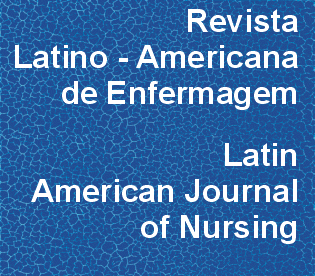Nursing leadership in intensive care units and its relationship to the work environment
DOI:
https://doi.org/10.1590/0104-1169.0150.2531Abstract
AIM: To establish whether there is any relationship between the work environment and nursing leadership at intensive care units (ICUs). METHOD: Correlational study conducted at four ICUs in southern São Paulo (SP), Brazil. The study population was comprised of 66 pairs (nurses and nursing technicians) established by lottery. The nurses responded to three instruments: 1) characterization; 2) a validated Portuguese version of the Nursing Work Index Revised (B-NWI-R); and 3) Grid & Leadership in Nursing: ideal behavior. The nursing technicians responded to 1) characterization and to 2) Grid and Leadership in Nursing: actual behavior, relative to the corresponding randomly-assigned nurse. The data were analyzed by means of analysis of variance (ANOVA) at p ≤ 0.05. RESULTS: The work environment was not associated with actual nursing leadership (p = 0.852). The public or private nature of the institutions where the investigated ICUs were located had no significant effect on leadership (p = 0.437). Only the nurse-physician relationship domain stood out (p = 0.001). CONCLUSION: The choice of leadership styles by nurses should match the ICU characteristics. Leadership skills could be developed, and the work environment did not exert any influence on the investigated population.Downloads
Download data is not yet available.
Downloads
Published
2015-02-01
Issue
Section
Original Articles
License
RLAE’s authorship concept is based on the substantial contribution by each of the individuals listed as authors, mainly in terms of conceiving and planning the research project, collecting or analyzing and interpreting data, writing and critical review. Indication of authors’ names under the article title is limited to six. If more, authors are listed on the online submission form under Acknowledgements. The possibility of including more than six authors will only be examined on multicenter studies, considering the explanations presented by the authors.Including names of authors whose contribution does not fit into the above criteria cannot be justified. Those names can be included in the Acknowledgements section.
Authors are fully responsible for the concepts disseminated in their manuscripts, which do not necessarily reflect the editors’ and editorial board’s opinion.
How to Cite
Nursing leadership in intensive care units and its relationship to the work environment . (2015). Revista Latino-Americana De Enfermagem, 23(1), 106-113. https://doi.org/10.1590/0104-1169.0150.2531



